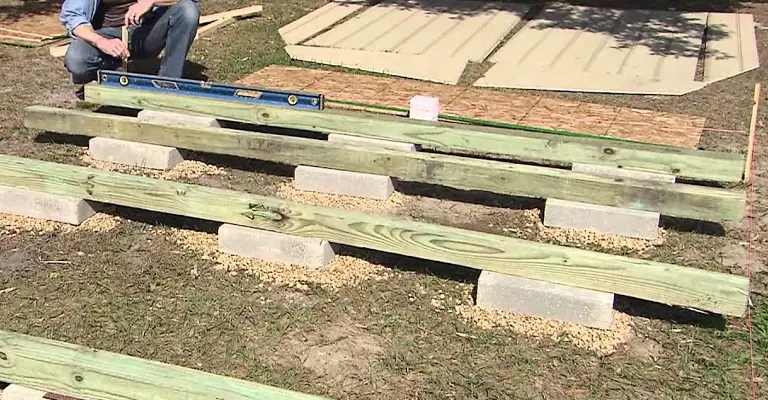When planning to build a shed, one of the crucial steps is determining the number of concrete blocks needed for the foundation. The foundation serves as the base for your shed, providing stability, support, and longevity.
Generally, it’s suggested to use one block for every 4 square feet of shed floor space, making sure the blocks are not more than 3 feet apart.
For a 10 x 10 foot shed (100 square feet), you’d need at least 25 blocks spaced no more than 3 feet apart. A solid concrete block measuring 3 x 8 x 16 is best for sheds.
This foundation is constructed using a series of solid concrete blocks, arranged in straight rows with even spacing between each block.
How Many Concrete Blocks for a Shed Foundation?
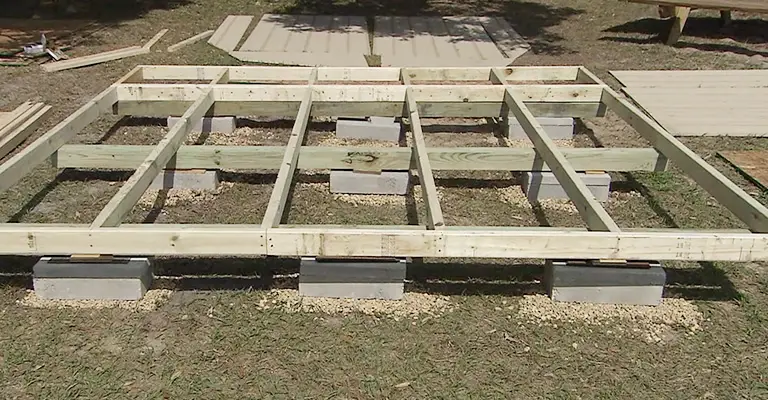
It is recommended that concrete blocks are placed at every corner. According to the shed size, a few feet every 6-8 feet around the perimeter or halfway between the corners. You should support the middle of the shed similarly.
Depending on the framing material used to support the structure, the spacing of the blocks will also affect them.
Putting concrete blocks six to eight feet apart along the rows is okay, as concrete is incredibly durable and can withstand massive amounts of pressure.
Considering the framing materials when calculating the brick count is also necessary. Rather than doing too little and getting into a costly accident, it is always better to plan ahead and do a little more than you think you need.
You could also get hurt if the floor falls out from beneath you. There is a chance of breaking an ankle in mere inches of splintered wood.
How To Put A Small Shed On Concrete Blocks?
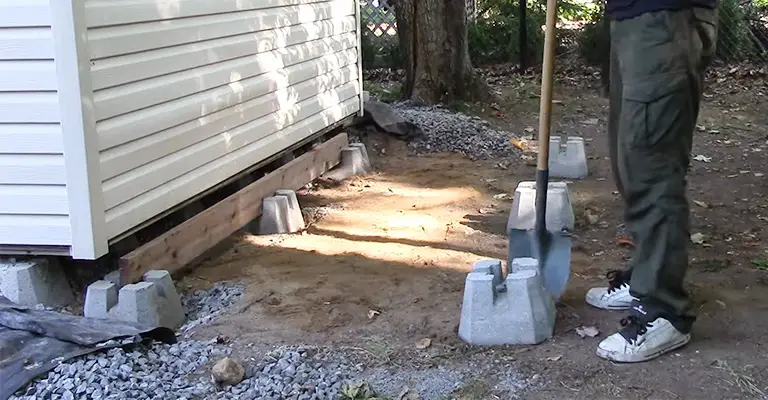
It is possible to significantly expand your home’s storage space, as well as maximize the use of unused outdoor space. A shed base can be made of concrete blocks, producing a stable, sturdy foundation.
The process of mounting a shed on concrete blocks isn’t tricky. If you follow the right guide, you can even do it on your own.
Things You Will Need
- Level
- Trowel
- Shovel
- Jack
- Gravel
- 2-inch concrete levelling blocks
- 3x8x16 solid concrete blocks
1. Prepare the Ground and Buy Supplies
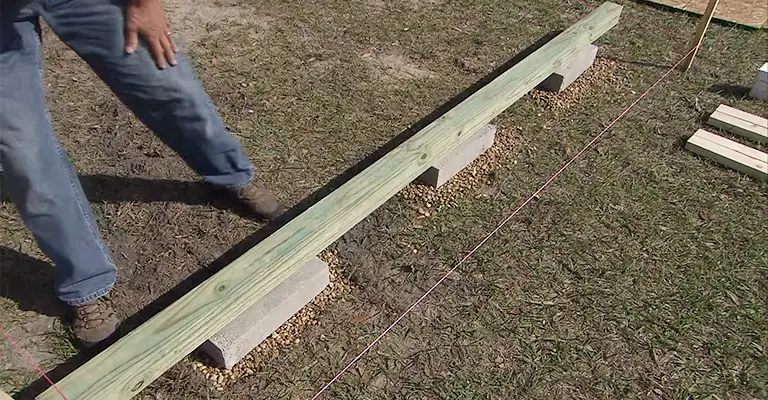
The first thing Heartland Sheds explains is how to determine the deepness of your foundation hole.
An average concrete block measures 16 inches long, 8 inches wide, and 3 inches deep. A solid concrete block will rest at each corner of your shed, and the rest will rest on the ground.
A shed-levelling jack above your work area can either be used to mark the ground according to the shed’s dimensions, or you can suspend the shed on the jack according to its dimensions.
2. Dig Your Foundation
Following that, you’ll dig the foundation. To prepare the blocks, remove the soil using a shovel. There should be holes that can accommodate a size of 3 x 8 x 16. The shed’s longer side should align with the 16-inch side of the block.
When the shed is square, align them from front to back. Rather than working at the back of the shed, you must lower the front and work at the front of the shed if it’s on a jack.
3. Lay Gravel and Install the Shed
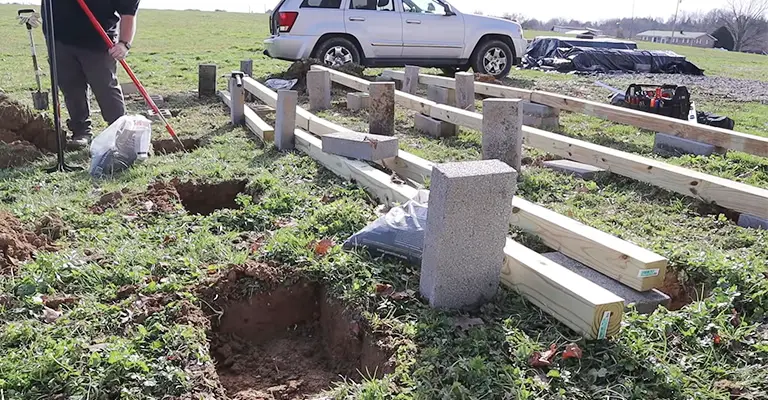
According to Fine Homebuilding, you should adjust the soil and add gravel to make your shed level. To start, tamp down the soil in the holes with a trowel.
Then, you must spread gravel over the ground and install solid concrete blocks. After you have completed the preparation for installing the shed, it’s time to put it in.
Ensure that you gently lay the shed on top of the concrete blocks. By using a jack, you can slowly lower the shed. To ensure a successful installation, follow the instructions provided by the manufacturer.
Don’t worry about whether it’s perfectly level when placing this piece. During the next part of the installation, any areas where the shed is not level will be addressed.
4. Test and Level the Concrete Blocks for the Shed Base
Step inside the shed and place your level flat against the back wall. You should note the side the bubble leans towards if the tool reveals uneven ground.
The shed will level by raising the back of the shed with your jack and placing a 2-inch solid concrete levelling block on the bubble side. As you add layers of 2-inch blocks, continue testing with the level until the bubble remains in the middle.
The steps above should be repeated for the front of the shed. Put the level up against the wall in the front.
There may be a difference in the results between the front and back of your yard, despite the fact that one side of your yard is higher than the other.
Due to this, you may have dug your holes in the wrong sizes, so the front results may vary from the back.
Repeating the steps on each side is essential to prevent your items from rolling backwards. The process of jacking, levelling, and lowering may seem tedious, but it will be worth it in the long run.
Warnings
Put your shed in full sun in an open space at least 3 feet away from structures and overhanging trees.
The shed’s position allows sunlight to dry the structure after rainfall and prevent dripping tree branches from dampening it and causing mold.
You should use only solid concrete blocks when constructing a permanent shed foundation. It is inevitable for concrete blocks with openings to crack and crumble underneath the weight of a shed.
Tips
Whenever you trim branches, wipe them with 70 to 100 per cent rubbing alcohol before storing them in a garden shed to prevent the spread of plant disease.
You should place your garden shed near the area where you will use the tools its storage holds. After every garden tool is used, clean it with a stiff wire brush to remove the soil.
Make a protective coating by mixing sand with motor oil in a 5-gallon bucket before storing tools in a shed.
Do I Need a Foundation for My Shed?
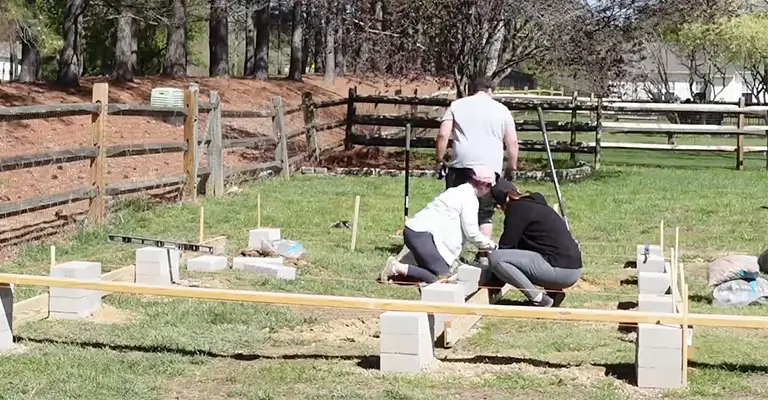
If you decide to get a shed, your first decision should be to determine where it will be located. This is one of the most important decisions you’ll have to make about your shed. It seems pretty simple, but it’s an important decision.
It is crucial to know whether you will need a foundation under the site and whether you can use a concrete block foundation. You should consider where you live and what you will use the shed for when planning your shed.
A shed that is placed directly on the ground will rot within a few years. There is no guarantee that pressure-treated lumber won’t rot.
Various elements, such as moisture from the soil, insects, or rodents, can damage wood. You should never forget that rain and snowmelt pool around your shed, making access difficult and muddy.
As well as preventing entry, snow buildup can make it difficult for people to get in. Creating a level base for your shed is typically achieved with a foundation. In most construction sites, there is no level ground.
Adding a foundation to your shed creates a level base and prevents water damage. This can also facilitate access during the winter months.
Can a Concrete Block Foundation Be Used?
Creating a level shed floor using concrete shed foundation blocks is easy. Stacking them or double dumpling them gives a broad base, which can be used for uneven slopes or higher clearances.
Whether you have a flat or on-grade foundation, concrete blocks are the perfect choice. They elevate your structure off the ground and prevent it from rotting.
How Many Concrete Blocks for a Shed Foundation?
It is recommended that concrete blocks are placed at every corner. According to the shed size, a few feet every 6-8 feet around the perimeter or halfway between the corners.
You should support the middle area of the shed similarly. Depending on the framing material used to support the structure, the spacing of the blocks will also affect them.
Which is Better, Concrete Block or Poured Foundation?
It is more vital to pour concrete reinforced with steel than to pour concrete blocks. The problem is if you are using it only to support and level a shed’s foundation, you are overdoing it.
In order to level and drain the ground of the poured concrete or block structures, the same ground preparation is needed. When you make a form, an 8″x8″x16″ block is more accessible to place than mixing and pouring ready or delivering ready mix.
Final Words
Now that you know how to figure out the number of blocks you need, you can build your shed in no time. If you anticipate waste or breakage during construction, add a few extra blocks for contingencies.

